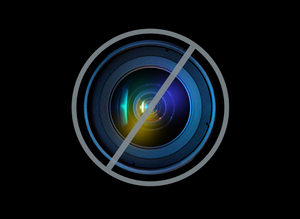

A few days ago, a friend of mine posted a Facebook album of 70 photographs taken over a five-hour period the previous Saturday afternoon. This wasn't careful documentation of a wedding or a birth, mind you. Just what seemed to be a stop-motion animation of 20-somethings getting hammered. Highlights included a blurry snapshot of someone attempting to duck out of the camera's frame, a fuzzy portrait of a girl with her eyes half-closed, and the corner of a building.
There was no attempt to weed out irrelevant images. And why bother? It's easier just to share everything than whittle down the best photos. Once upon a time, whoever did the sharing had to pick out the interesting information. Now the message seems to be, "You figure it out."
Thanks to social media-enabled life-streaming, we've been thrust into an unlikely scenario where it actually takes more effort to consume the content that's being shared than it does to create it. Spend 20 minutes browsing The Huffington Post while listening to Spotify, and, thanks to "frictionless" apps, you can easily post 20 updates to Facebook without ever visiting the site.
But just like grumpy editors wielding red pens, a burgeoning category of sites and apps are battling that trend with offerings that actually limit what we can say about ourselves. Don't tell us a lot of somethings we don't know, they encourage, tell us one thing. And only one.
We've reached a point where not sharing isn't an option: If I didn't tweet it, it didn't happen, and the fewer photos I have, the more pathetic I must be. Yet in contrast with other sites' share-more-with-more-people mandate, these selective social networks have been engineered with an eye to enforce quality over quantity. They let us talk -- but not babble.
Consider Instagram, which has users who have to be picky about what they share. They can upload only a single image at a time, requiring them to edit their work and select the very best image from several they've snapped. Each photo has the feel of a carefully crafted creation. And we don't see the outtakes.
Facebook's Camera app, a photo-sharing app that was widely dismissed as an Instagram clone, lacks a key element that made Instagram such a success: forced restraint. Users can upload a dozen photos in the time it takes to share one. The result: My friends have generously shared photos that have fingers over the lenses, or have posted multiple images of the same rose.
Twitter, of course, was the original selective social network. Its 140 character limit challenges users to be witty and insightful within limited means, and leaves little room for throat clearing. Does that stop people from being windbags? Hardly. But at least the bursts of hot air are brief.
The video version of Twitter is Viddy, a video-sharing service that allows users to add Instagram-like filters to videos and gives users just 15 seconds per clip. Whereas there's often the sense on YouTube that someone has left the camera rolling and accidentally stumbled across something to share, there's the feeling on Viddy that people have been purposeful about what to capture on camera. The best videos feel like the online equivalent of short stories: The character development happens quickly, but you care about the characters by the end.
Cinemagram offers even less to work with. The app lets users animate a small section of a static image with a video recording of up to 3 seconds in length. The images, which require some care to produce correctly, reflect even more studied choice than an Instagram image: Cinemagramographers must not only select a single photo to share, but must also select a single part of that single photo that they'll bring alive with motion.
Path, a private social network that caps users' friend groups at 150 people, relies on peer pressure to limit what's shared. Whereas on Twitter and Facebook I feel as though I'm speaking to the public, on Path I'm certain that I'm surrounded only by close friends. As a result, I'm more guarded about what I post -- no self-promotion, no filler, just the fun photos and the salient facts. And I end up posting a lot less frequently.
By far the strictest limits on sharing are imposed by The Best Thing This Year (TBTTY), a mailing list of more than a thousand people that lets subscribers post once, and only once, each year. The stories range from the personal and promotional to the eye-opening and reflective. The best I've seen so far is a 3,000-word email that began, "I jumped off a cliff." It got even better from there.
These edited life experiences are the artisanal goods of the Internet. Instagram's photo filters remind us of analog images that, because of the fickleness of photo processing and cost of film, were one of a kind and precious. There's the sense that people have labored over the compositions they share with TBTTY, refining the one email they get to send to a captive audience this year. And on Viddy, it feels like someone has spent longer crafting the 15 seconds you'll see than the time you spent looking up the video and watching it.
These strict rules of engagement benefit the app-makers, as well, ensuring their social sites maintain a distinct feel and unique atmosphere. They'd rather be the boutiques of the web, it seems, than a one-stop-shop megastore.
